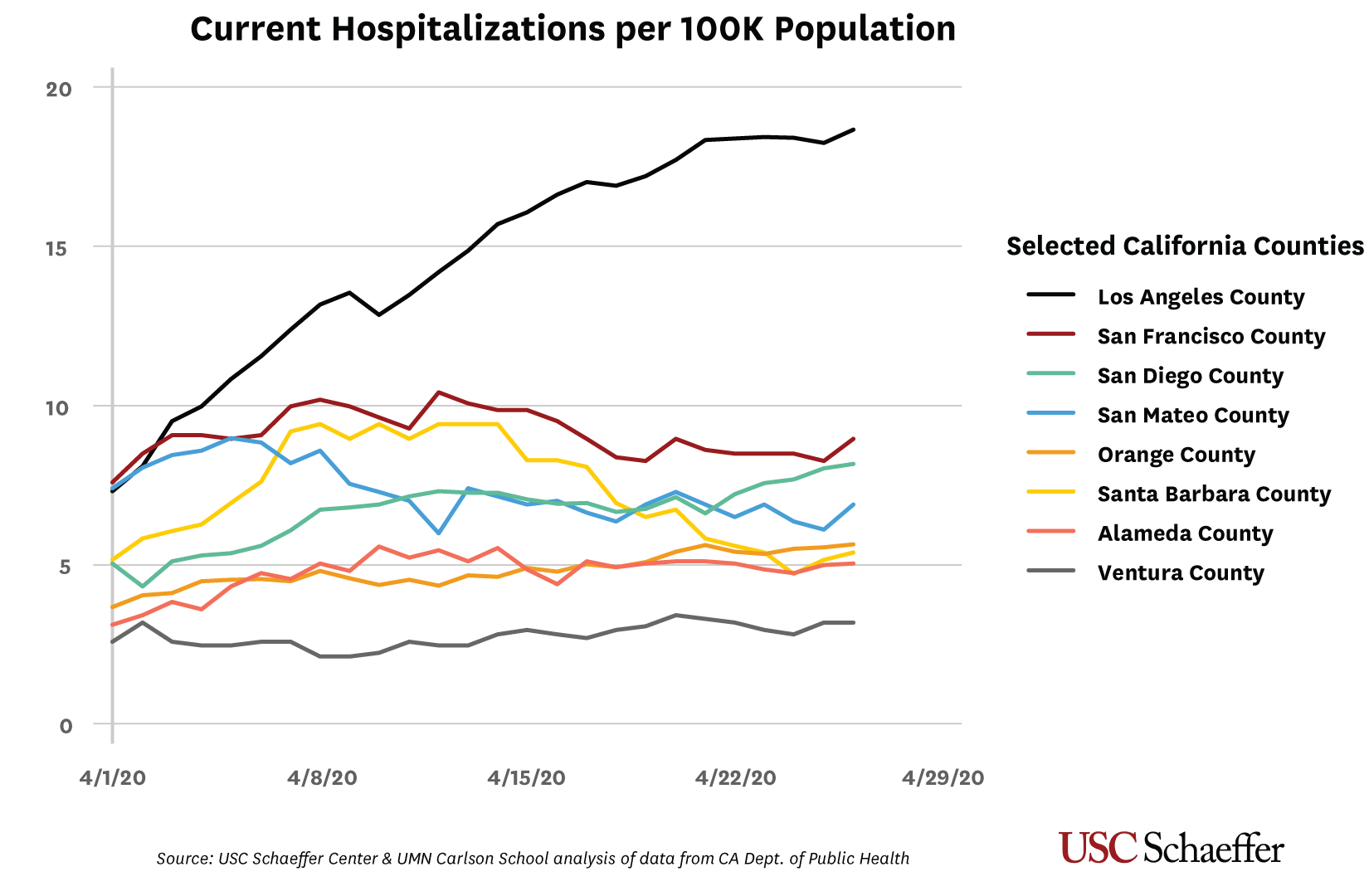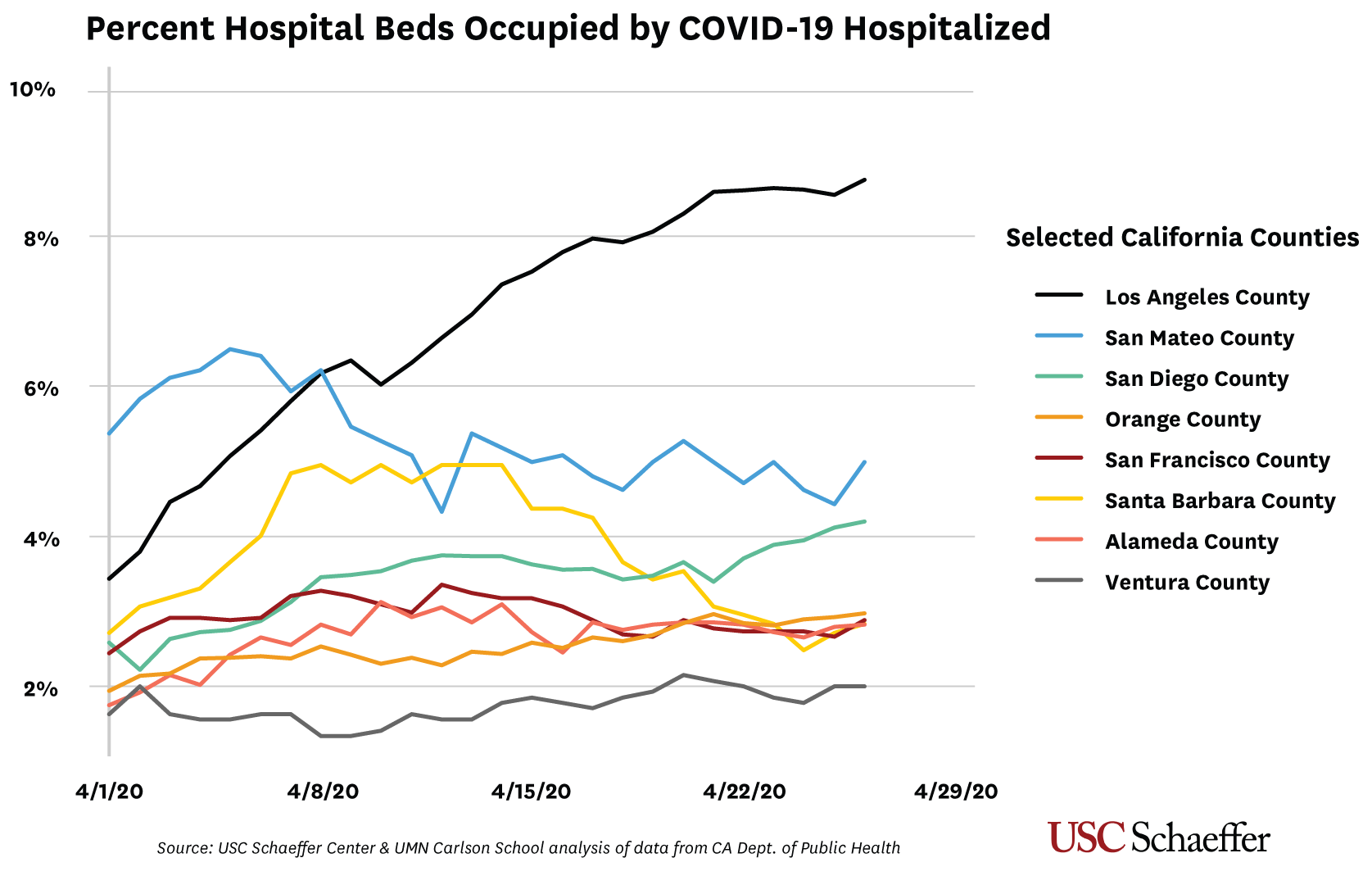Editor’s note: This analysis is a collaboration between the USC Schaeffer Center for Health Policy & Economics and the University of Minnesota Carlson School of Management’s Medical Industry Leadership Institute, and Management Information Systems Research Center.
Five weeks after Governor Gavin Newsom issued a stay-at-home order to battle the coronavirus threat, temperatures soared across most of California this past weekend, tempting many to venture outside to popular beaches and hiking trails. Officials in Orange and Ventura Counties opened their beaches, while Los Angeles County beaches remained closed. The contrasting responses can be explained at least in part by hospital data, which also illustrate why some counties may open up sooner than others.
We looked at three data sets from eight coastal counties in April: COVID-19 hospitalizations per 100,000 people; percent of hospital beds that are occupied by COVID-19 patients; and percent of ICU beds that are occupied by COVID-19 patients in ICU. Across all measures, Los Angeles County is the epicenter of California’s outbreak, with the steepest and highest trend lines for the state.
Hospitalizations compared to population is one way to measure how new infections are impacting a county. While Orange County reported 124 new COVID-19 hospitalizations on Saturday – marking a new record for the county – hospitalizations are still lower than in many of the harder hit counties. In contrast Ventura County recorded one new case.
Across all these counties, less than 10 percent of hospital beds are occupied by COVID-19 patients.
Capacity of intensive care beds compared to demand is a little more startling, but still well under capacity. We see that even in Los Angeles, less than 30 percent of ICU beds are occupied by COVID-19 patients. But, this share has almost doubled since April 1. This could be a worrisome trend going forward.




You must be logged in to post a comment.